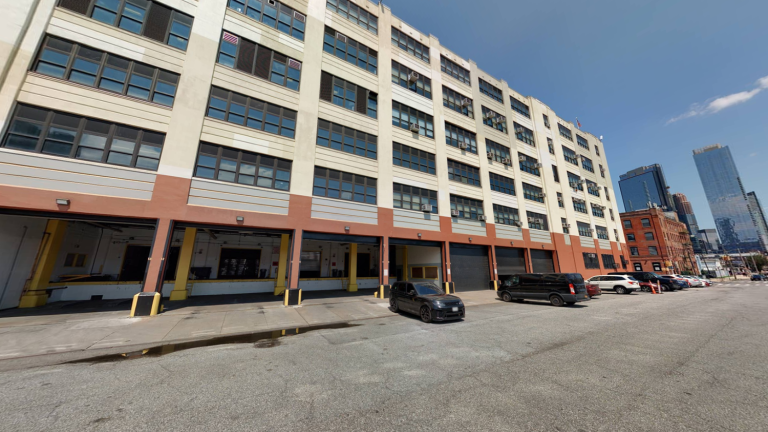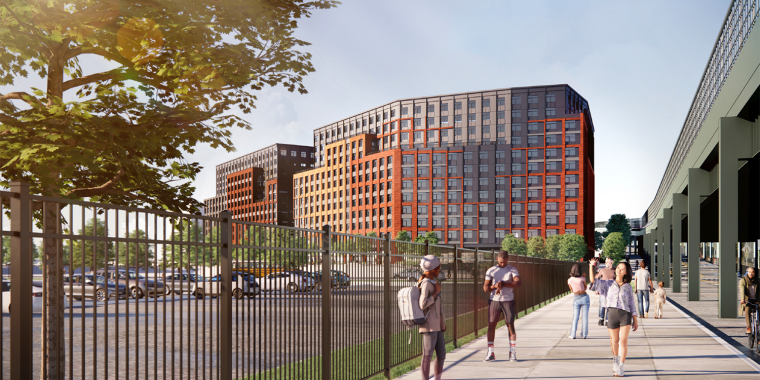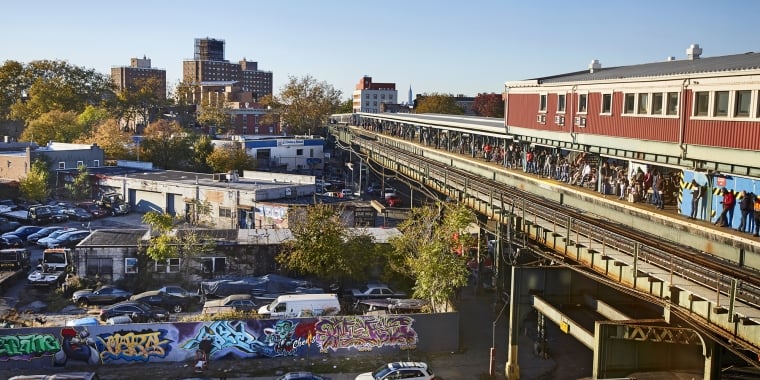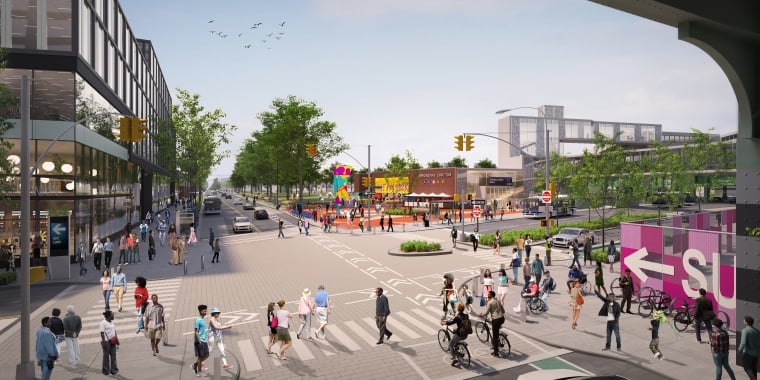NYCEDC Issues Request for Information for Adaptive Reuse Opportunity in Long Island City

Building on Adams Administration’s OneLIC Neighborhood Plan, New RFI Seeks Ideas for Adaptive Reuse of 44-36 Vernon Boulevard Building
RFI Builds Off a Two-Year Public Engagement Process that Included In-Person and Online Meetings Engaging 1,800 Participants
NEW YORK, NY—The New York City Economic Development Corporation (NYCEDC) today released a Request for Information (RFI) to solicit ideas and interest regarding the potential redevelopment of the New York City Public Schools (NYCPS) building at 44-36 Vernon Boulevard (also known as the Vernon Building) in Long Island City, Queens. The RFI invites ideas to redevelop all or a portion of the Vernon Building through adaptive reuse, in line with the goals of the OneLIC Neighborhood Plan that recently entered the public land use review process.
Situated along 44th Drive and facing LIC’s East River waterfront near Anable Basin, the Vernon Building is a City-owned property that currently acts as a hub for New York City Public Schools (NYCPS) operations across the five boroughs. The massive six-story building, constructed in the 1930s and early ’40s, comprises nearly 700,000 square feet and is used for storage and warehousing, office workstations, and trade shops for several NYCPS divisions. With floorplates of approximately 100,000 square feet, there is potential for all or a portion of the building to be redeveloped through adaptive reuse to provide a mix of light industrial, office, retail, cultural, and/or community-serving uses.
“Today we are one step closer to bringing vitality to this site, which is a crucial component of the OneLIC plan,” said Deputy Mayor for Housing, Economic Development, and Workforce Adolfo Carrion, Jr. “This site has the potential to unlock tremendous benefits to the community. I thank EDC and DOE for the work they've done to reach this milestone, and I look forward to seeing the redevelopment of this site advance.”
“The Vernon Building presents a potential opportunity to deliver waterfront access, open space, be a driver of jobs and economic opportunity, and many other exciting new uses envisioned by the community in the OneLIC plan,” said NYCEDC President & CEO Andrew Kimball. “This RFI will help inform how the site could be transformed to deliver maximum benefit to the Long Island City community.”
“Uses for public land in Long Island City should be determined by the public. As we dive into the RFI process, we look forward to our neighbors driving the vision for the DOE building on Vernon Boulevard in Anable Basin,” said Council Member Julie Won. “Responses gathered through the RFI process will help to ensure that future development on public sites is shaped by community feedback and that proposals truly reflect our community’s priorities. Both the RFI and future RFPs for public sites are crucial steps in our larger comprehensive neighborhood planning process that will address community needs like affordable housing, community space, schools, artist creative spaces, green space, workforce development, and more.”
“We’re using every resource available to build a more dynamic and prosperous Long Island City, and this site is an important resource to achieve that goal,” said New York City Department of City Planning Director Dan Garodnick. “This RFI is an important first step to bringing more community-serving uses to the area, ones that will benefit the New Yorkers who live, work, and play in this vital neighborhood.”
Responses to the RFI will help the City, Councilmember Julie Won, and Long Island City stakeholders understand the level of interest in pursuing adaptive reuse of the Vernon Building as well as the potential benefits, challenges, and feasibility of such a project. Respondents are asked to outline a vision for the transformation of the building with new uses, which could include light industrial, retail, office, cultural, and/or community-serving uses such as workforce development. Additionally, respondents will need to detail their approach to implementation, including potential redevelopment partners and financial feasibility. In addition, proposals should be responsive to the community priorities expressed through two years of intensive public engagement in the OneLIC neighborhood planning process. A summary of that feedback is appended to the RFI.
This RFI builds on feedback heard from a two-year public engagement process led by the Department of City Planning (DCP) that included 16 public meetings (both in-person and online) with a grand total of 1,800 participants. DCP also received over 5,750 comments and 2,350 survey responses from New Yorkers about the proposal. Additionally, DCP recently published the OneLIC Neighborhood Plan booklet, which provides detailed information on the proposal, planning process, and next steps.
The OneLIC Neighborhood Plan, which recently entered into the public review process, is an ambitious proposal to deliver tens of thousands of homes and jobs to Long Island City, Queens. This initiative would revamp local zoning and map Mandatory Inclusionary Housing—which requires new developments to include permanently affordable housing—on a wide scale in the neighborhood for the first time, creating 14,700 new homes. Additionally, the plan would increase commercial and industrial space in the area, creating 14,400 new jobs and bolstering economic opportunities for residents, workers, and business owners alike.
Redevelopment of the site and adjacent City-owned properties would proceed through a public procurement process following the conclusion of the Uniform Land Use Review Procedure (ULURP) for the OneLIC Neighborhood Plan in late 2025.
Responses to the RFI are due on August 27, 2025. The RFI is available for download on NYCEDC’s website. For more information on the OneLIC Neighborhood Plan, visit licplan.nyc.
About NYCEDC
New York City Economic Development Corporation is a mission-driven, nonprofit organization that works for a vibrant, inclusive, and globally competitive economy for all New Yorkers. We take a comprehensive approach, through four main strategies: strengthen confidence in NYC as a great place to do business; grow innovative sectors with a focus on equity, build neighborhoods as places to live, learn, work, and play; and deliver sustainable infrastructure for communities and the city's future economy. To learn more about what we do, visit us on Facebook, Twitter, LinkedIn, and Instagram.


